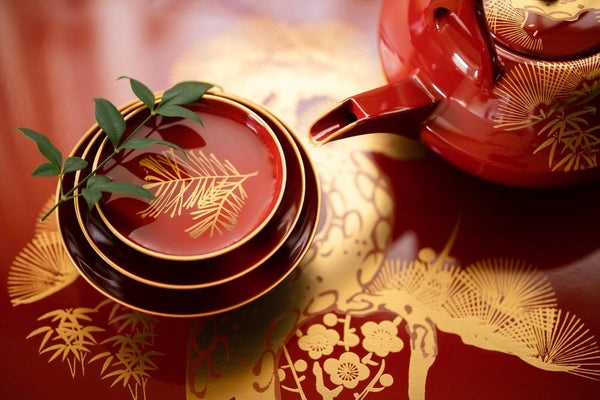
Jump to:
If you have ever wandered around the souvenir section of a Japanese department store, you will no doubt have come across some highly ornate shiny lacquer eating utensils and boxes. This is the ancient craft of Shikki or Japanese lacquerware, which is said to go back to the Jomon period, at least 15,000 years ago.
In this article, we shall consider what Japanese lacquerware is, how it is made and the reason it is so expensive, look at how it has evolved over the years, discuss some different regional varieties and famous lacquer artisans, as well as some places to purchase lacquerware in Japan.
What Is Japanese Lacquerware?
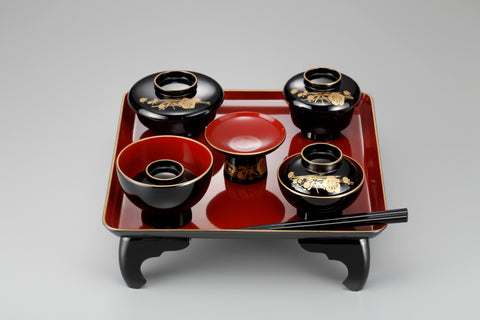
Lacquerware is a craft in which wood or paper is repeatedly coated with lacquer, which is the sap extracted from the trunk of the Urushi (or poison oak) tree. In a narrow sense, lacquerware refers to "lacquer-coated tableware," but in a broader sense, it includes all items that are coated with lacquer. Historically, in Asia and other countries, lacquerware was made for a variety of uses, including tableware, boxes, chests, stands, shelves, and car bodies, and a diverse range of crafts were produced, from daily necessities to highly decorated arts and crafts, providing both decoration and functionality.
When lacquer hardens, it becomes very resistant to acids and alkalis and can last for several thousand years. In fact, there have been cases reported where the wooden base is known to have rotted away completely, but the original lacquer layer has retained its color and quality. Because of this durability, lacquerware pots have been found in excavations dating back to the Jomon period (8000 BC-300 BC).
Process Of Creating Japanese Lacquerware
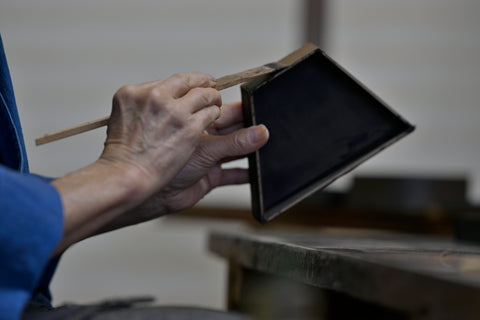
Lacquering is certainly not easy and involves a highly elaborate process.
The lacquering process begins by applying a colorless lacquer to the wooden base. When this lacquer coat has dried, a varnish mixed with fine clay is applied to fill in the natural grain of the wood and create a smooth surface. In total, about 20 more coats of lacquer are applied. These layers may be mixed with clay, fine earth, and, finally, layers of colored lacquer. Each layer should be applied very thinly so that the previous layer has time to dry properly. If the layers are too thick, the outer layer will harden, while the inner layers will remain liquid. Although we have referred to it as drying, the lacquer does not actually dry but hardens through a chemical reaction. Lacquer hardens best in moist air with a relative humidity of about 85%. The chemicals in the lacquer act as a catalyst to oxidize it, and this permanently hardens the raw material.
The items are then placed in a drying cabinet with a humidifier to provide the necessary humidity for the lacquer to dry completely. As each coat of lacquer dries, it needs to be polished by hand. A pumice stone is used to smooth out large irregularities and a fine abrasive such as charcoal is used to make the surface completely smooth. A quality lacquer object may have more than 30 coats of lacquer and take months or years to polish.
This is the reason why lacquering is so expensive. It is a laborious process of adding multiple coats of lacquer, which is a manual task that is both time-consuming and highly skilled.
History Of Japanese Lacquerware

So how did it all start?
In the Jomon period, lacquer was used to glue stone tools and to make arrows. In later periods, wooden combs coated with lacquer have been excavated. There are also indications that lacquer was used to repair broken earthenware, and this use of lacquer as an adhesive has been carried on to the modern age in the art of Kintsugi, in which pieces of broken pottery are joined together using lacquer and the cracks are covered in gold.
From the Heian period (end of the 8th to end of the 12th Century), lacquer techniques were refined with the flourishing of the court culture in Japan, and some famous techniques, such as maki-e were developed. When using maki-e, patterns in lacquer are drawn on the lacquerware using a brush, following which gold or silver powder is sprinkled on and sticks to the lacquerware before it dries. Due to the high cost, however, at this point, it was only really enjoyed by the aristocratic class.
From the 11th century, a method of producing lacquerware using one or two coats of lacquer on top of an initial rough coating was developed, which significantly brought down the cost, and in the Edo period, the number of products developed using lacquer greatly increased. Owning large quantities of lacquerware, however, has remained outside the reach of most common people, and lacquerware sets used for special occasions are often passed between families.
Regional Varieties Of Japanese Lacquerware
Japanese lacquerware comes in various regional varieties, and a few of these are discussed below.
Daigo Urushi
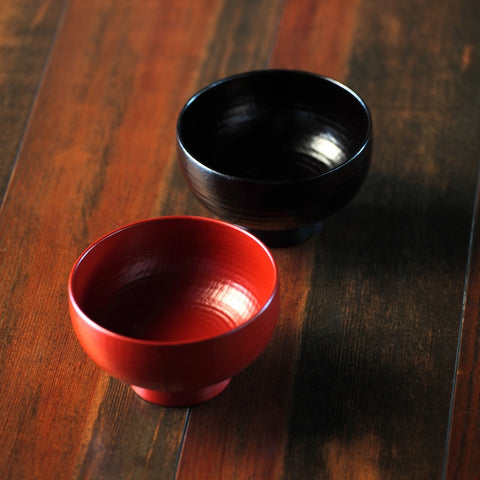
The Daigo Urushi sap harvested in the area around Daigo in Ibaraki Prefecture is widely considered to be the best in Japan. It is suited to high-end lacquerware because of its highly transparent luster.
Negoro-Nuri Urushi
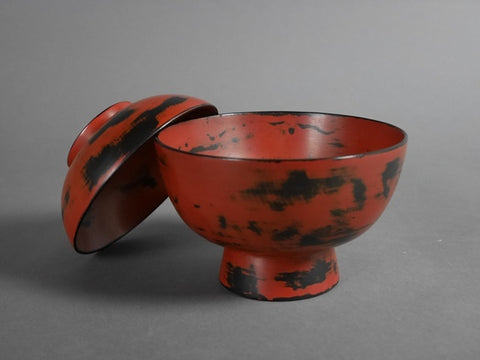
Negoro Urushi is a style from the former Izumi province (modern-day Osaka). In this style, the items are first painted with a black lacquer, and layers of red are placed on top. As it is used, the red gets worn away leaving the black beneath. This worn effect is deliberate and is a hallmark of this style.
Tsugaru-Nuri
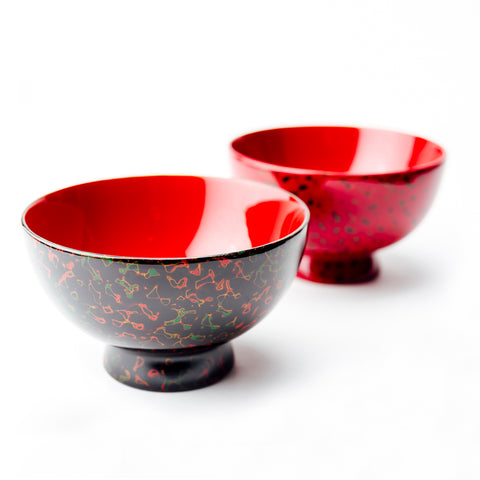
Tsugaru-Nuri is traditional lacquerware that originated around 300 years ago in the Tsugaru region surrounding Hirosaki in Aomori Prefecture, using lacquer from the Aomori cypress trees. Many layers of lacquer with different colors are applied over a base pattern, with each layer being carefully dried. This results in richly detailed patterns, which are full of depth and have a glossy sheen.
Wajima Nuri
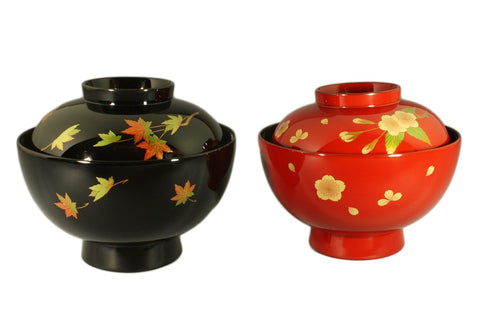
Wajima-Nuri is a type of lacquerware that hails from Wajima in Ishikawa Prefecture. The main distinguishing feature of Wajima-Nuri is the durable undercoating achieved by applying multiple layers of lacquer mixed with powdered diatomaceous earth onto delicate zelkova wooden substrates.
Famous Japanese Lacquerware Artisans
In this section, we will look at some famous lacquerware artisans throughout history.
Zeshin Shibata has become known as “Japan’s greatest lacquerer”, and he rose to prominence during the Meiji period (19th Century Japan), when there was a renewed interest in lacquer as artists developed new designs and experimented with a variety of different textures and finishes. Moving the focus away from the embedded gold and silver, the appeal of Shibata’s work was more in his subject matter. He also imitated Western oil paintings by placing lacquered panels inside frames.
Two other prominent Japanese lacquerware artisans from the 19th century, Komin Nakayama, famous for his Suzuribako (writing box), and Shosai Shirayama, had a different focus, and, using the maki-e style described earlier, had a classical style that drew heavily on Japanese and Chinese landscape art.
Gonroku Matsuda, born in Kanazawa City, Ishikawa, in 1896, continued the maki-e tradition into the twentieth century. He was designated a Living National Treasure in 1955, and in 1965, he received the Mainichi Publication Culture Award for his book "The Story of Urushi". He is a master craftsman who has left his mark on the history of lacquer crafts, to the extent that he is sometimes referred to as a "lacquer saint”.
Where Can I Buy Japanese Lacquerware?
Japanese lacquerware is prominently displayed on the souvenir floor of Japanese department stores, as well as in handicraft centers and stores. Another great place to start your lacquerware journey is the Japanese Taste website. There is a wide range of products to choose from, and we shall introduce some of these below.
Bento (Lunch) Boxes
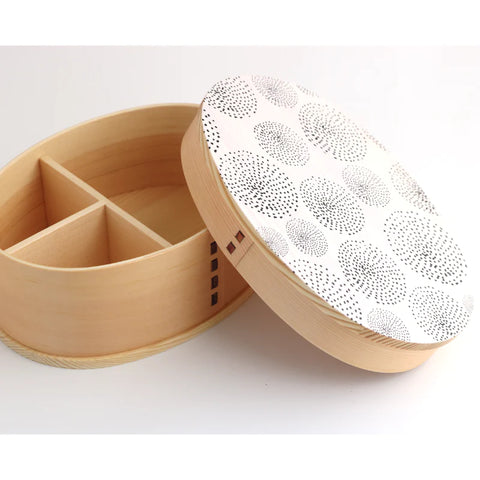
At the cheaper end of the market, there is a wide selection of bento boxes. These include wooden lunchboxes made by Kyoto in Shippo, Seigaiha Wave, and Asanoha Leaf patterns. There is also this two-tiered rectangular bento box, lacquered in the sandalwood style. You may also enjoy this Maki-e style wooden lacquer bento box with a beautiful carp design on the lid.
Chopsticks

There are also lacquered wooden chopsticks in Japan, which we carry in black and red. Despite their impressive appearance, they are priced low enough to make an affordable souvenir for even the lowest of budgets. If you have a little more to spend, there is also this set of two pairs of dry lacquer chopsticks in a wooden box with a rabbit design.
Special Gifts

If you are looking for a gift for a special occasion or person, you should definitely check out this A4-size handcrafted wooden storage box. The box is not only functional, but the lid features a stunning image of a hawk flying over a pine tree. This is a perfect example of Japanese functional art, combining beauty and functionality. The same box also comes with a sunrise crane design.
Another exquisite gift for those on a higher budget is this handcrafted wooden paper knife with a wave flower pattern.
Japanese Lacquerware: Combining The Functional And The Beautiful
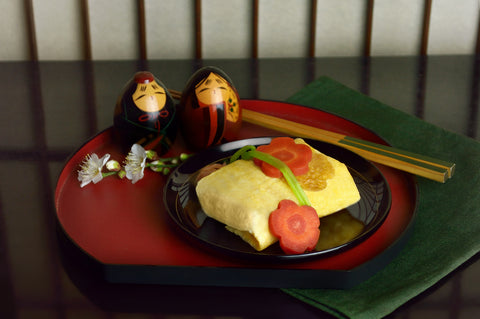
Crafts, including ceramics, are a very important part of Japanese culture.
As we have examined in this blog post, Japanese lacquerware is an ancient craft going back centuries and is used, to this day, to create highly ornate, strikingly beautiful, and durable items.
Although lacquerware tends to be expensive, due to the painstaking manual process of adding multiple coats, it provides one with the opportunity to purchase something both exquisitely beautiful and truly lasting.
Are you a fan of lacquerware? Do you use it in your everyday life? Let us know in the comments.


0 comments